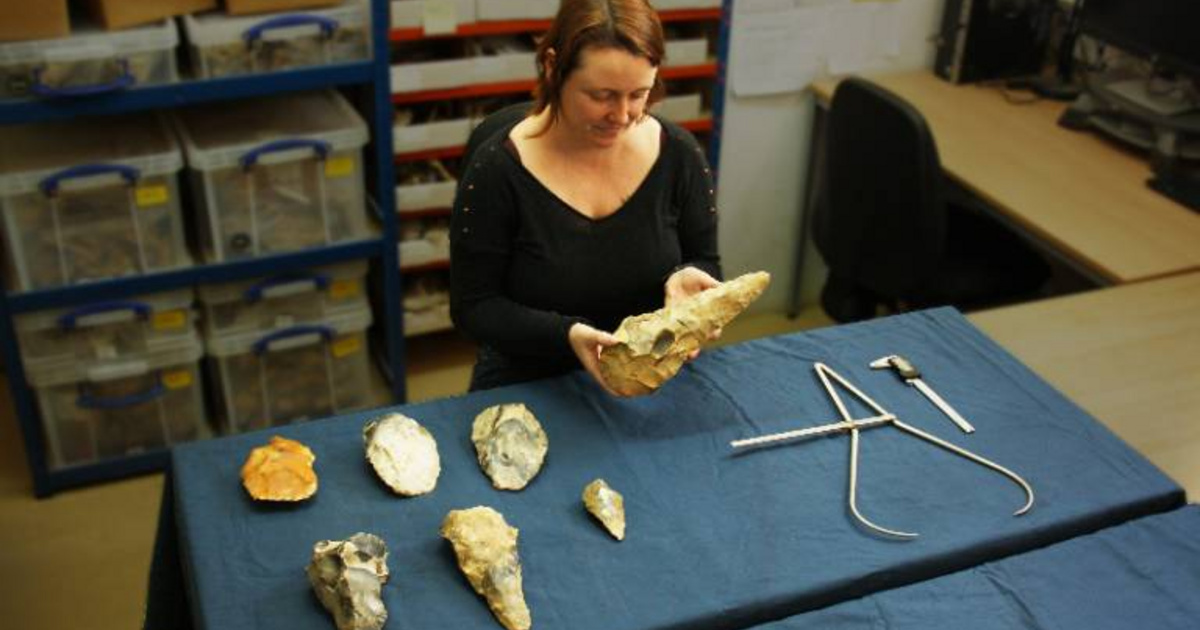Many strange giant sculpins have been discovered by archaeologists while excavating the site of the School of the Future in southern England. One of the finds is the third largest known stone hand tool, and as such, it’s classified in a special group of giant stone tools—because archaeologists come across these massive stone axes of unknown purpose from time to time.
The ax was a pre-human tool on the island 300,000 years ago. Unlike other known prehistoric stone tools, which are more or less proportional to the human hand, giant stone axes are more than 22 cm long but can reach up to 30 cm in length, making them impractical for practical one-handed use.
Letty Ingri, a researcher leading the excavations at University College London, said that in addition to the giant ax with a diameter of 30 cm and 22 cm, another 800 pieces were found, but they could not say who used the mysterious stone ax.
We think the tools come from the warm period between the two ice ages, 300,000 to 330,000 years ago. No human fossils have been found, so we have no direct evidence of their makers. However, we do know that Neanderthals lived in Britain at this time, or they may have belonged to another early human species.
Angry said.
Image: Southeast Archeology/UCLA
Giant scissors were relatively common in this era and, like practical tools, were produced by capture.
Handmade stone axes are usually seen as cutting tools. This type of knife, with its strong cutting edge, is well suited for processing killed animals and cutting meat. We don’t know yet if these large objects served a different purpose or were used in a different way. The giant stone axes we used to find really stick out, but it’s no coincidence that they’re that big. Who made her put serious work into it. At first, he had to find a suitable stone and then carefully clamp it to form the long, sharp point
Angry pointed out.
Folklore mentions giants, but paleontologists do not know of any large or large-handed human ancestors. However, the adze is the human tool that has been in use for the longest time, so Homo erectus and its descendants, Homo habilis, used it as it was appropriated by Neanderthals. According to some archaeologists, since they do not look particularly practical, it is possible that they were some kind of Stone Age status symbols or were revered as objects of worship.













































